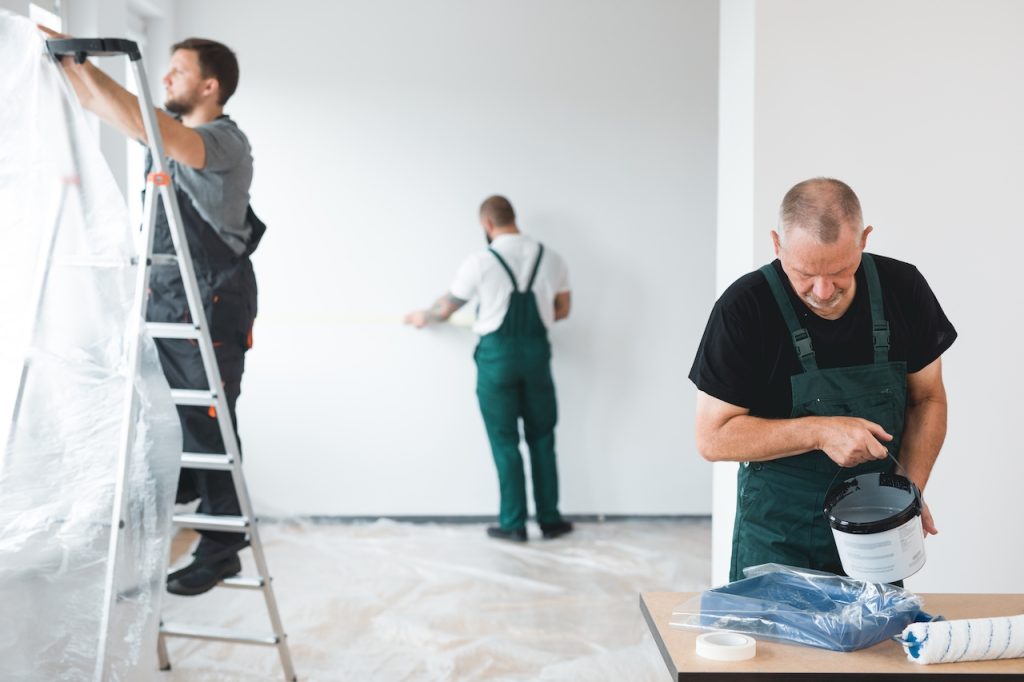When it comes to home improvement projects, having the right tools is essential for success. Whether you’re a seasoned DIY enthusiast or just starting out, having a well-equipped toolbox can make all the difference.
In this article, we will explore the essential home improvement tools that every DIY enthusiast should have. From basic hand tools to power tools and safety equipment, we’ll cover everything you need to tackle your projects with confidence and precision.
Basic Hand Tools
- Hammer: A versatile tool that allows you to drive nails and remove them when needed. Look for a hammer with a comfortable grip and a balanced weight for optimal control.
- Screwdrivers: You’ll need both flathead and Phillips head screwdrivers to handle various screw types. Invest in a set that includes different sizes to accommodate different screws.
- Tape Measure: Accurate measurements are crucial for precise cuts and installations. Look for a tape measure with clear markings and a locking mechanism to hold measurements in place.
- Utility Knife: A utility knife is a must-have for cutting and scoring materials such as drywall, carpet, or packaging. Choose one with a retractable blade for safety and convenience.
Power Tools
- Cordless Drill: A cordless drill is a versatile tool that can handle a wide range of tasks, from drilling holes to driving screws. Look for one with adjustable speed settings and a variety of drill bits.
- Circular Saw: A circular saw is indispensable for making straight cuts in various materials. Opt for a model with adjustable cutting depth and a sturdy base for stability.
- Power Sander: A power sander makes sanding surfaces a breeze, saving you time and effort. Consider a random orbital sander for versatility and a smoother finish.
- Jigsaw: When it comes to cutting intricate shapes and curves in different materials, a jigsaw is the go-to tool. Look for one with variable speed control for better control over your cuts.
- Table Saw: The table saw is a powerful tool that deserves special mention. It excels at making accurate and precise rip cuts in various materials. With an adjustable fence and a sturdy tabletop, the table saw is a DIY enthusiast’s best friend for larger projects.
Safety Equipment
- Safety Glasses: Protecting your eyes from flying debris and particles is essential during any home improvement project. Invest in a pair of safety glasses that fit securely and provide adequate coverage.
- Dust Mask: When sanding or cutting materials, a dust mask helps filter out harmful dust and particles. Choose a mask with a proper seal and a high filtration rating for maximum protection.
- Work Gloves: Protecting your hands from cuts, abrasions, and splinters is crucial. Invest in a pair of durable work gloves that offer both comfort and dexterity.
- Ear Protection: Many power tools produce loud noise levels that can damage your hearing over time. Invest in a pair of earplugs or earmuffs to reduce noise exposure.
Additional Tools and Accessories
- Level: A level ensures that your installations are straight and even. Look for a sturdy and accurate level to achieve professional-looking results.
- Chisels: Chisels are essential for shaping and carving wood or removing excess material. Invest in a set with different sizes to accommodate various tasks.
- Clamps: Clamps are indispensable for holding materials securely during assembly or glue-ups. Look for different types of clamps, such as bar clamps or spring clamps, to suit different projects.
- Measuring Tools: A combination square, a spirit level, and a laser measure are invaluable for achieving precise measurements. Each tool serves different purposes and contributes to the accuracy of your work.
- Toolbox or Tool Storage System: Keeping your tools organized and easily accessible is crucial. Invest in a sturdy toolbox or a tool storage system that accommodates your growing collection.
Tips for Choosing and Maintaining Tools
To make the most of your tools, consider the following tips:
- Quality over quantity: Invest in durable and reliable tools that will last longer and perform better.
- Research before purchasing: Read reviews, compare specifications, and choose tools that suit your specific needs and budget.
- Proper tool maintenance: Clean and lubricate your tools regularly to keep them in optimal condition. Store them in a dry and organized manner to prevent damage.
- Replace damaged tools: Regularly inspect your tools for wear and tear. Replace any damaged tools to ensure safety and efficiency.
Conclusion
With the essential home improvement tools mentioned in this article, you’ll be well-equipped to tackle a wide range of DIY projects with confidence and precision. From basic hand tools to power tools like the table saw, each tool serves a specific purpose and contributes to the success of your projects. Don’t forget to prioritize safety by wearing appropriate protective gear.
By investing in quality tools, maintaining them properly, and continuously expanding your collection, you’ll be ready to take on any home improvement challenge that comes your way. So, stock up your toolbox, embrace your DIY spirit, and enjoy the satisfaction of transforming your living space with your own two hands.
















